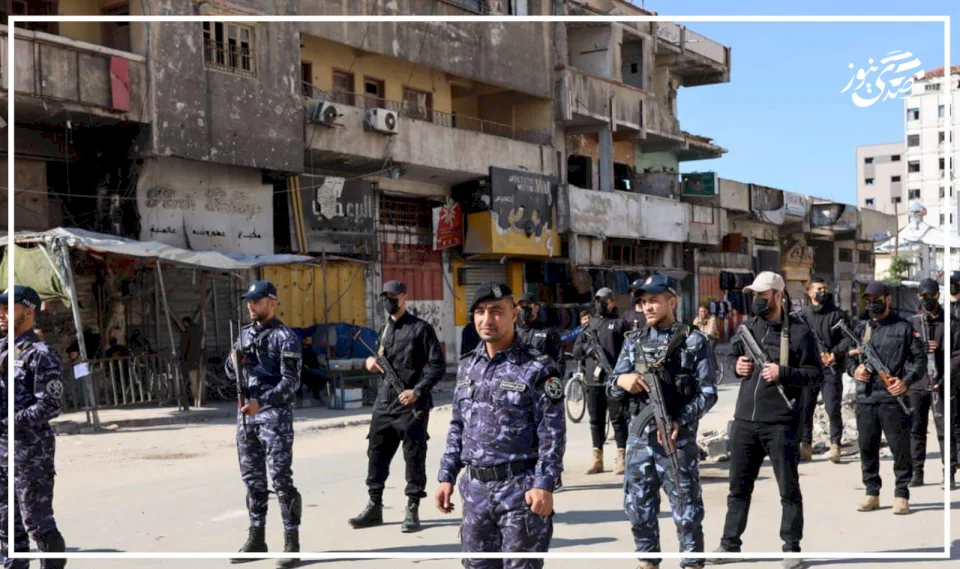
SadaNews reports.. Hamas between permanent and temporary control of the Gaza Strip?
SPECIAL SadaNews - After the ceasefire took effect on October 10 of this year in the Gaza Strip, Hamas has returned to assert its control over the area in regions where there are no Israeli forces present.
The area controlled by Israeli forces is about 53 percent, while Hamas controls the remainder of this area.
Hamas has deployed its security forces from various agencies in the streets to showcase its strength to both the Israelis and the local residents, sending a message that challenges many parties while asserting that it remains strong and cohesive despite the war that lasted two years.
On the ground, according to observations by SadaNews, Hamas is still effectively controlling the security, governance, and public services such as municipalities and important ministries including health, education, and economy.
Hamas has re-established temporary headquarters for its security forces in areas under its control and has begun pursuing those suspected of collaborating with Israel, as well as those involved in criminal cases.
Local municipalities are overseeing various projects aimed at attempting to improve infrastructure conditions, reopening water wells, and coordinating with international entities to seek support in fuel and other resources to supply residents with water, while also working on opening sewage pathways and clearing debris from public streets.
There is a clear activity from Hamas's Ministry of Economy in monitoring markets and regulating prices, destroying certain expired goods, as well as imposing taxes on some goods, particularly tobacco and frozen foods, while it controls some essential items including frozen goods and sells them at prices preferred by many residents, albeit in limited quantities.
Despite the passage of two years since the war, Hamas has maintained the payment of salaries to its civilian and military employees throughout the war and even after its conclusion. This was also noted by SadaNews.
Hamas was paying salaries in good cash notes, but in recent months it has resorted to distributing salaries in varying percentages from 50 to 65 percent, including partially damaged notes, while the majority of the salary is in good cash notes.
It also pays the salaries of the "Qassam" members, as well as the families of its martyrs, the wounded, and its captives.
According to a report by Ohad Hamo on Channel 12, there seems to be a secret clause regarding a prisoner exchange deal after Hamas made significant concessions regarding the names of its top leaders and those of the factions.
Hamo indicated, as translated by SadaNews, that the secret clause appears to involve some form of guarantees or assurances that Hamas received from mediators, potentially from the Americans and possibly others, ensuring its continued presence within the Strip without the removal of any of its leaders and members, while only its weapons such as tunnels and missiles would be dismantled, leaving light weapons with its members, and potentially integrating its members into the security apparatus that will later lead the governance of the Strip.

SadaNews reports.. Hamas between permanent and temporary control of the Gaza Strip?

Israel Detains Palestinian-American Teen for 9 Months Without Charges

UN Report: Gaza War and Restrictions on the West Bank Destroy Decades of Economic Growth

Hebrew Channel: Preparations for Building a Train Linking Israel to the UAE Continued Duri...

Israeli Broadcasting Authority Raises Expectations of a New Military Operation in Gaza

Report Reveals: Hamas Disabled Merkava Tanks via Secret Button in October 7 Attack

Senior European Official to "SadaNews": We Strongly Support the Palestinian Reform Plan an...

